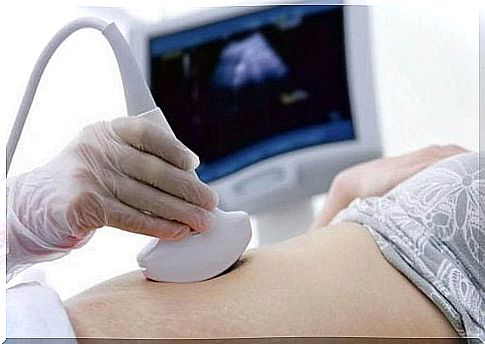What Is Amniotic Band Syndrome?

The amniotic ligament syndrome is a congenital birth defect in which certain parts of the fetus’ body are tied off by adhesive fibrous ligaments, so-called tying rings.
These usually wrap around your arms, legs, fingers, or toes.
The Amniotic band syndrome causes different defects, depending on what body parts are affected.
In extreme cases, when the lacing rings wrap around a more sensitive part of the body, it can lead to the death of the fetus. For example, through a miscarriage, when laced rings prevent blood flow in the umbilical cord.
There is no way to predict Amniotic Band Syndrome as it occurs completely randomly. There is no genetic predisposition or any other specific risk factor.
Furthermore, the occurrence has nothing to do with a previous pregnancy and has no effect on another.
In other words, if this syndrome occurs during one pregnancy, there is no reason to believe that it will repeat itself in the next.
At the same time, unfortunately, this also means that it can occur unexpectedly at any time.
How exactly does amniotic ligament syndrome develop?
 Specialists say this disorder begins to develop within the first 28 days after conception.
Specialists say this disorder begins to develop within the first 28 days after conception.
However, it can occur up to 18 weeks later. If the syndrome occurs by day 45, the consequences can be catastrophic.
The smaller the fetus, the greater the risk that the amniotic ligament will entangle vital organs. This can cause serious damage to the brain and other organs.
If the fetus is more developed, the effects are usually less serious because the baby already has better defenses.
It is very difficult to identify this defect before the baby is born.
diagnosis
However, in some cases, amniotic ligament syndrome can be detected by a simple ultrasound. As we noted earlier, it can occur at different stages of pregnancy.
That means doctors can sometimes make a diagnosis during a routine exam. However, because amniotic ligaments are very thin, they are difficult to see in the first 12 weeks of pregnancy.
If there is any suspicion, further examinations must be carried out to identify possible damage. For example, an MRI may be necessary.
However, the syndrome often goes undetected until after birth. Affected children are usually born without complications around the calculated due date.

Amniotic ligament syndrome: implications
The effects of this syndrome vary widely depending on which part of the body is affected. The most common areas are the arms, legs, hands, fingers, and toes.
In these cases, the affected areas may become deformed. Sometimes amputation is also necessary.
Amniotic band syndrome can cause a cleft lip or even a cleft palate when the fiber crosses the face. It’s also the main cause of club feet.
Specialists say that each case is unique as the location of the amniotic ligament is completely left to chance.
In addition, the severity of the damage depends on other factors, such as the time of fertilization and the placement of the amniotic sac.
Common problems include:
- Slight damage from wrinkles that do not affect the functioning of the organ.
- Deep wrinkles that need surgery because they cut off blood circulation.
- Narrowing of the extremities in various places. The fingers are usually more damaged because they cannot develop completely.
- Anborn amputation as a result of insufficient blood supply to an extremity. As a result, a part of the body can be lost before birth.
- Fusion of damaged parts of the body, especially as a result of defects such as syndactyly (fusion of two or more fingers).
- Dystrophy of the fingers or toenails.
- Underdevelopment of a limb, which leads to its length being reduced.
- Shortening of the joints as a result of pressure on the nerves from shortened ligaments.
- Encephalocele.
- Acrania, a faulty development of the skull bones.
- Anencephaly, which occurs when the brain does not develop.
- Hip misalignment.
- The formation of false joints, also known as pseudoarthrosis.








